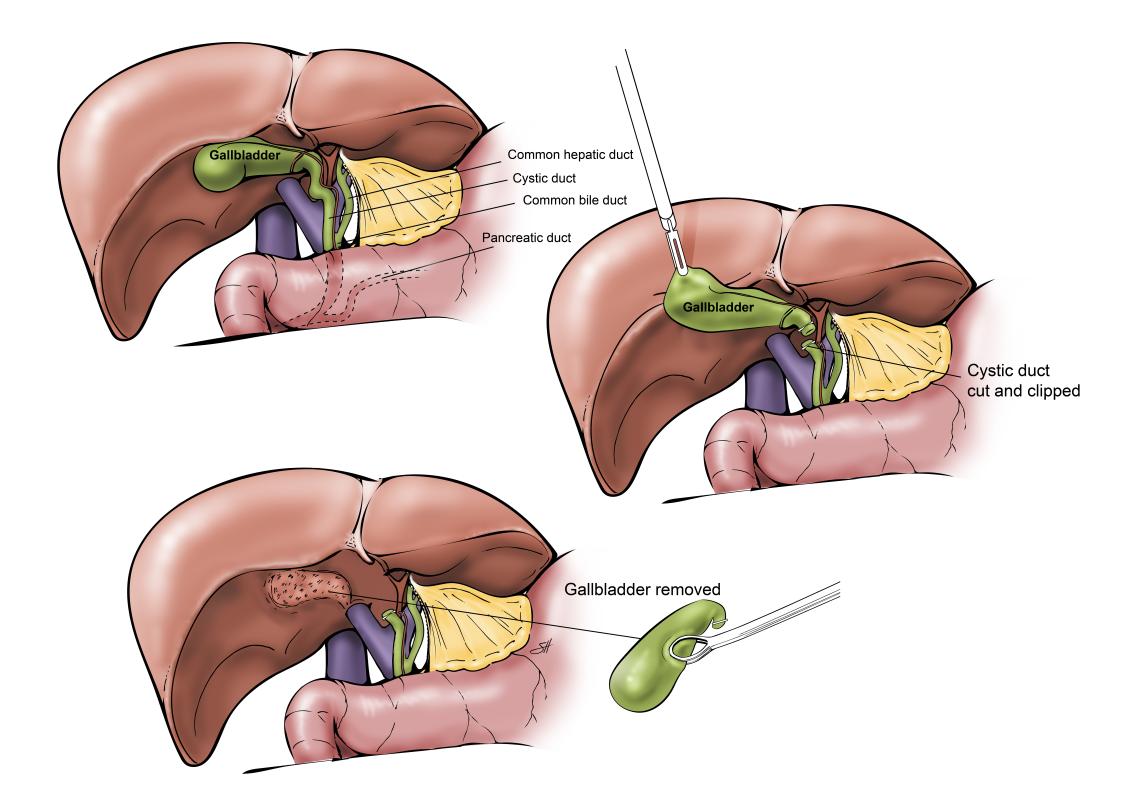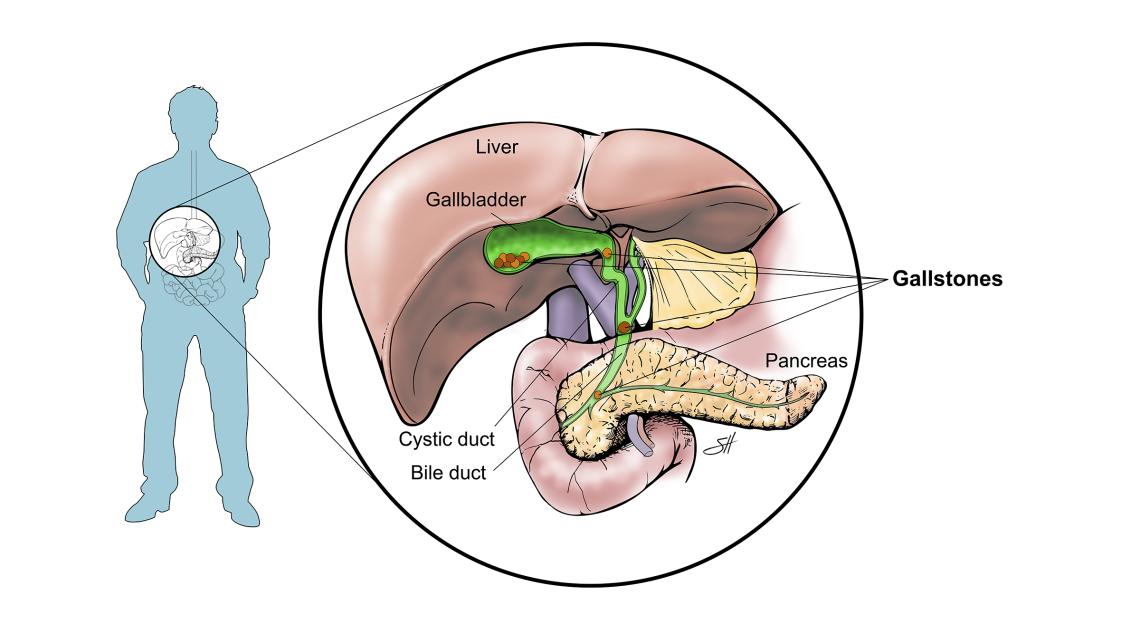What is cholecystectomy?
A cholecystectomy is a surgical removal of the gallbladder. The most common reason for removing the gallbladder is the presence of stones inside, which can be caused by diet and/or genetics. If the stones are not causing symptoms, then the gallbladder does not need to be removed. However, these stones often cause abdominal pain and nausea immediately after eating. If the pain is significant and you are healthy enough to have surgery, removal of the gallbladder may improve these symptoms. It is impossible to get rid of the stones without removing the gallbladder.
Sometimes the stones can leave the gallbladder and get stuck in the bile duct, causing a bile duct infection or inflammation of the pancreas. The stones can also get stuck leaving the gallbladder and cause a gallbladder infection. Removal of the gallbladder makes it less likely to have these problems. Less common reasons for cholecystectomy include gallbladder masses that are not stones and improper squeezing of the gallbladder, which causes pain.
Do I need my gallbladder?
Your gallbladder helps your body break down and store a substance called bile, which helps digest fats. While the gallbladder has a job in the digestion process, it’s not essential for your overall health. Your liver can still make bile and send it directly to your small intestine, so that you can digest fats even without a gallbladder.
Types of gallbladder surgery
Recovery – What to Expect
Most patients that undergo a laparoscopic or robotic-assisted laparoscopic cholecystectomy are able to go home the day of surgery after they wake up. Patients that undergo an open cholecystectomy typically need to stay in the hospital for a few days after surgery for pain control.








 Credit
Credit

